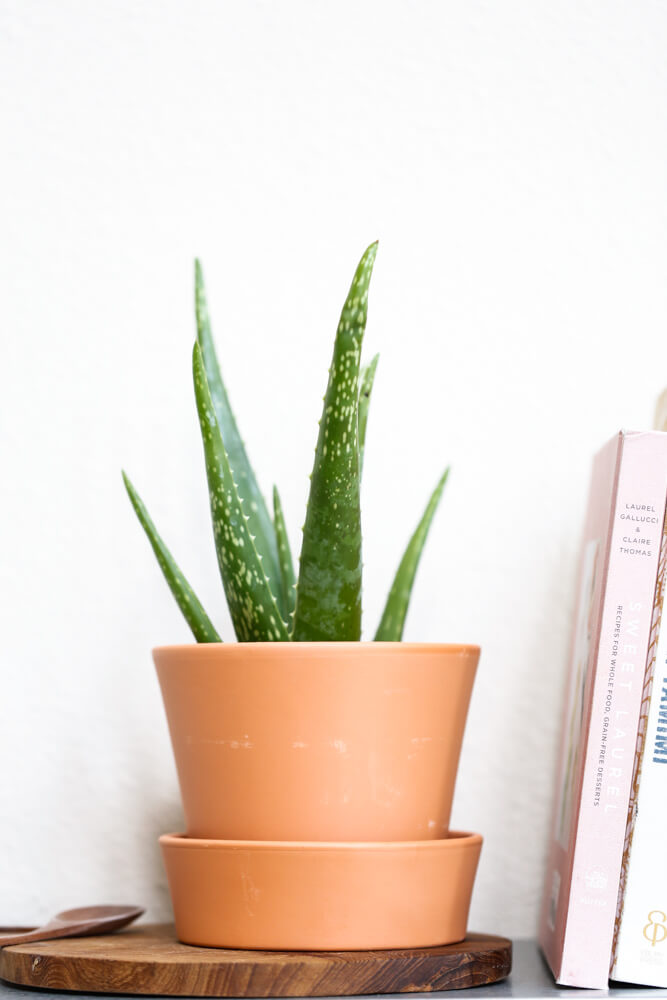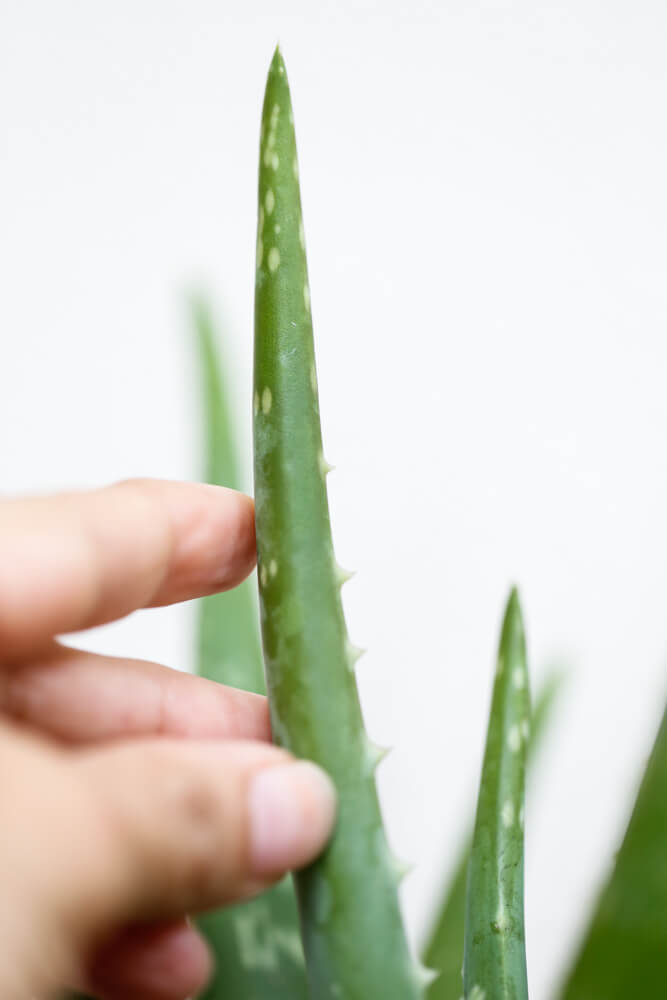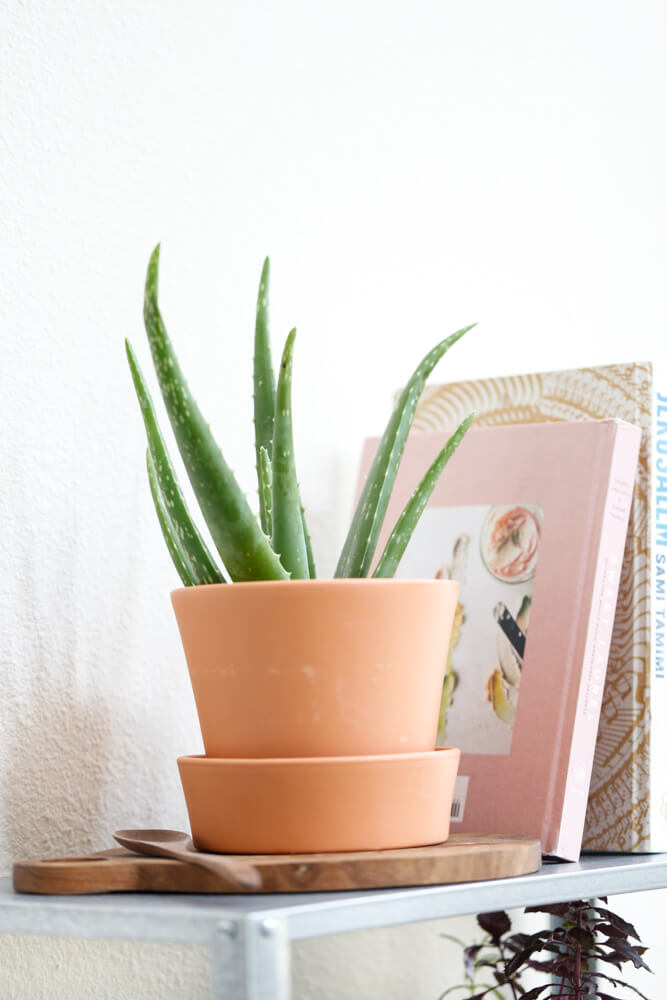
I’m loving the growing trend of indoor plants… ferns, alocasia, monsteras… and I want to make a case for adding to that list – a very beautiful, usable, medicinal plant: Aloe Vera!
Aloe vera plants are one of the easiest plants to grow, they require such little attention – yet provide so many benefits. Like most succulents, they happily grow indoors but need a sunny spot, like a windowsill. If you get a stream of sunlight coming into the kitchen – then your aloe plant will be happy there! The leaves are beautiful, they can actually grow 3 feet long! An aloe vera plant is low-maintenance, looks decorative, and brings healing into your home!
Aloe vera is the plant to reach for incase of a minor kitchen accident or burn. It helps to relieve pain, speed up healing and reduce the risk of infection. Extensive research shows that aloe’s healing ability is in part due to the presence of aloectin B, which stimulates our own immune system. (1)
How to care for your Aloe Vera plant
Aloe’s needs are simple, but important to follow so that it stays healhty! Here is the care guide, according to the Old Farmer’s Almanac (2):
Soil: Repot your aloe into well draining soil, designed for cactus or succulents.
Water: Every three weeks, water your aloe deeply. Allowing the soil to fully dry before its next watering.
Sunlight: Aloe loves the sun, give it a bright sunny spot in your home.
How Aloe Vera cares for you
First-aid: Reach for aloe for treating cuts, scrapes, scalds and burns. Simply cut the leaf and apply the inner gel to the effected area. The Herbal Academy reports studies that show aloe contains salicylic acid and magnesium, “substances that work synergistically to create a powerful pain-relieving effect.” (3)
Sunburn: If you are treating a sunburn and you want it to heal quickly, apply aloe vera all over your skin where needed and repeat often.
Bites & Sting: Stop the itch and irritation from a mosquito bite with a dab of aloe. You can also use it to treat more chronic skin conditions like, psoriasis and dermatitis. (4)
When you cut the aloe vera leaf, you may see a yellow sap… simply wash that away. Its called aloe latex, and it has an obnoxious odor! If you eat aloe, you’ll want to know that aloe latex is used as a powerful laxative.


If you’re looking for an indoor plant for you home, consider growing aloe vera! With such simple needs, this plant will take care of you for years to come!
references:
- The Encylocpedia of Medicinal Plants, by Andrew Chevallier
- Growing Aloe Vera, Old Farmer’s Almanac
- Herbarium, The Herbal Academy
- Aloe Vera in Dermatology, PubMed
